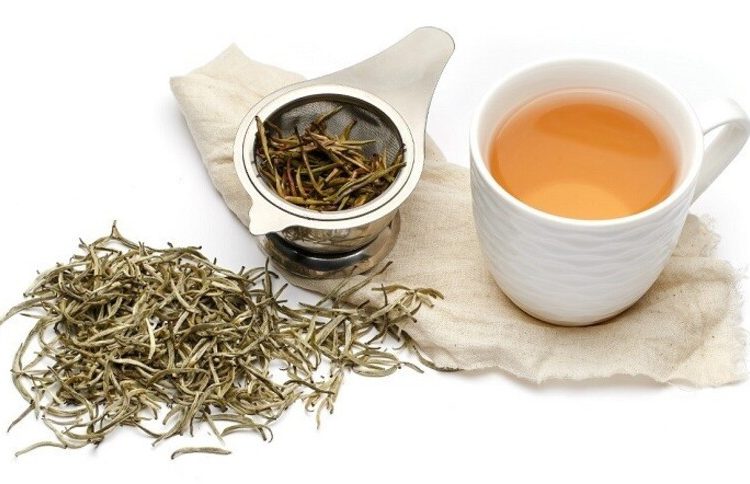How to import tea from Vietnam? In recent years, demand and sourcing tea from Vietnam have grown strongly thanks to rising consumer interest in specialty and green teas, and Vietnam’s improving export infrastructure and certifications. In this article, we will walk you through the full process of Vietnamese tea importing, from market research and supplier selection preparation to shipping logistics and customs clearance.
Benefits of Importing Tea from Vietnam
When it comes to tea export, Vietnam is currently the fifth largest tea producer and exporter in the world. Vietnamese tea has been improving in quality and diversification since around 2018. In 2023, the country exported about 121,000 tons, worth US$211 million, of tea. The total export tonnage has hovered between 120,000 to 140,000 tons annually during 2018-2023, generating approximately US$220-240 million per year. The CAGR of Vietnam’s tea exports is projected at around 4.5% for 2024-2030.
Key consumer countries for Vietnamese tea are Pakistan, Taiwan, Russia and Mainland China. The export trend also witnessed a shift to the European Union and the United States in recent years.
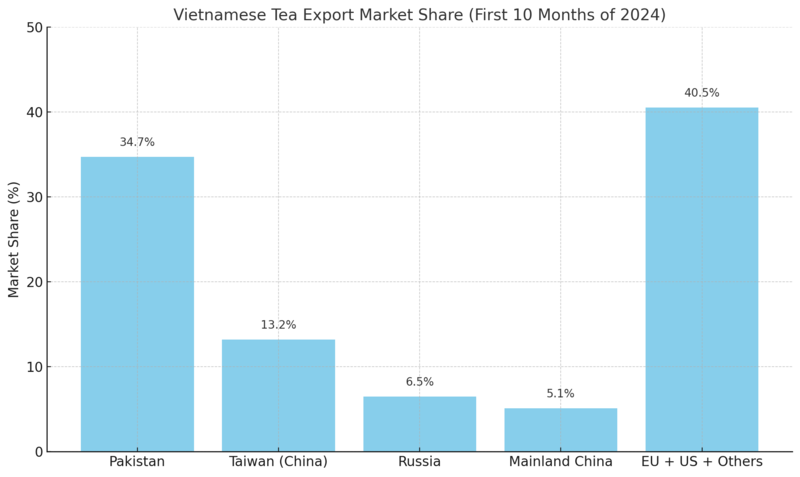
So, why has demand suddenly increased? Below are the main reasons:
- Rising global demand for organic, premium and specialty teas. Vietnam has amongst the world’s oldest tea trees, dating back to 1000 years. The country is also home to ancient wild-grown varieties like Shan Tuyet, which are famous for their rarity, altitude-grown quality, and minimal processing.
- Increased global interest in health-conscious products and shifting preferences from sugary beverages to natural teas.
- Competitive pricing, with average export price around 1,762 USD per ton in 2024, only about 65-70% of the global average.
- Government support for processing, branding, and certification (VietGAP, Organic, Fairtrade).
- Free trade agreements such as CPTPP and EVFTA help expand access to high-value markets.
What is The Most Popular Tea in Vietnam?
So, what are the most exported tea types in the country? While the domestic market prefers green, herbal, and premium processed teas, importers mostly demand raw green tea and black tea for low-cost mass production and blending purposes. In parallel, demand for scented tea, especially lotus‑scented and jasmine‑scented varieties, are also on the rise.
Here comes the breakdown:
1. Green tea
This type of tea features non-fermented nature and light, grassy flavor and is the most widely exported tea from Vietnam. In 2023, the country exported approximately 52,600 tons of green tea, generating a total value of 104 million USD. In terms of processing, raw or lightly processed form dominates.
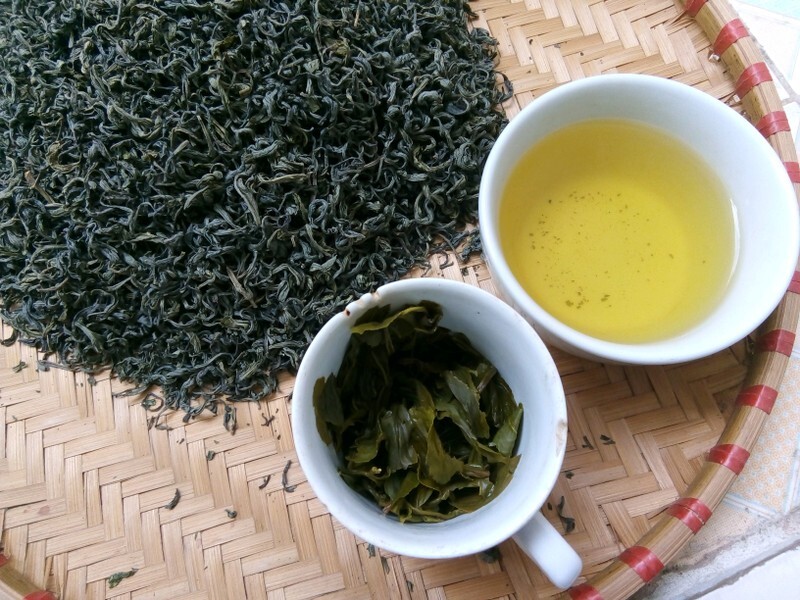
2. Black tea
This is the second most exported tea variety from Vietnam. Compared to green tea, black tea is fully fermented and has a bolder, more robust flavor profile, often used in strong milk-based blends.
In 2023, around 42,200 tons of black tea was exported, worth around 57.2 million USD. It is frequently processed in CTC (Crush-Tear-Curl) form, which means the leaves are mechanically cut into uniform pellets for quicker brewing and stronger liquor.
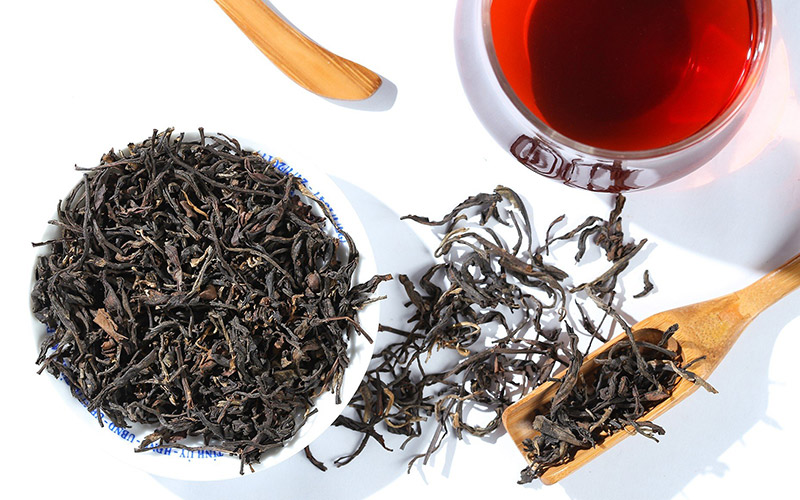
3. Scented tea
Scented tea is a traditional Vietnamese specialty, typically produced by marinating green tea leaves with flowers like jasmine or lotus. It is mainly exported in bulk or loose-leaf form, targeting niche markets that value floral aroma and handcrafted processing techniques.
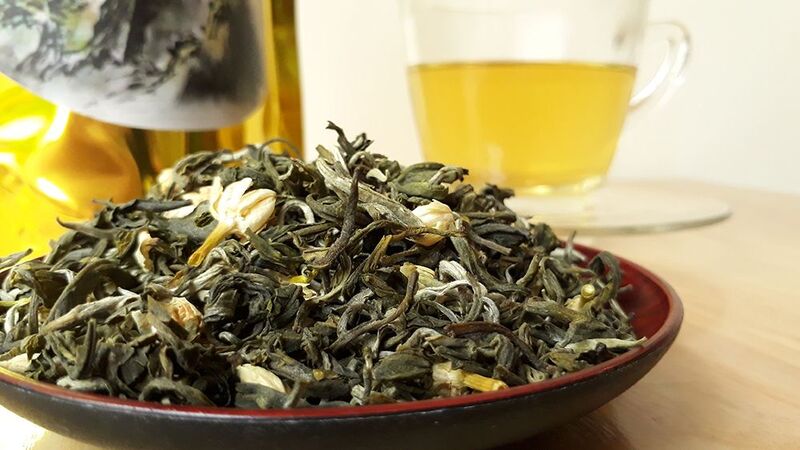
4. Oolong tea
This is a semi-fermented tea with a flavor profile between green and black tea, often associated with premium segments. Though accounting for a smaller portion of exports, demand has shown steady growth, especially for high-mountain oolong varieties grown in Lam Dong and some northern upland areas. The product is typically exported in loose-leaf or vacuum-packed formats.
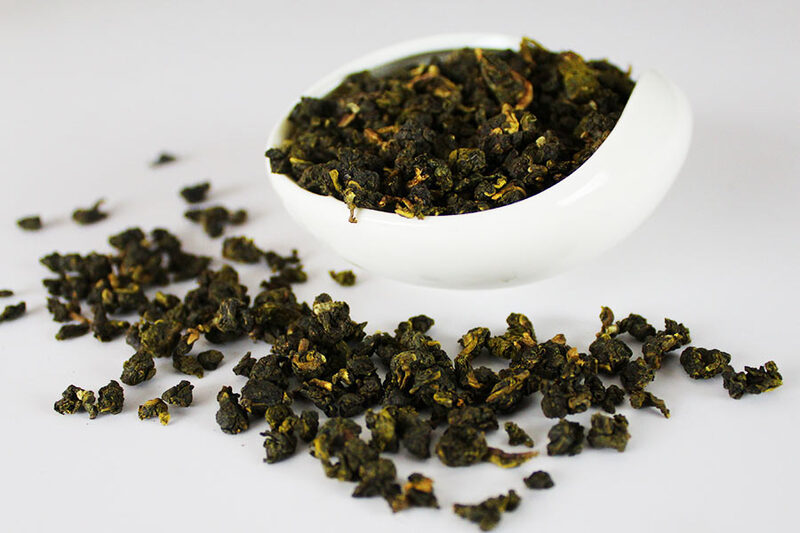
Besides green, black, scented, and oolong tea, niche demand for Vietnamese teas is gradually expanding. Some importers look for unique products such as wild-grown Shan Tuyet tea harvested from ancient tea trees in mountainous regions like Suoi Giang and Ha Giang. Others seek herbal or functional teas made from native Vietnamese ingredients such as artichoke, ginger, or chrysanthemum, often consumed for wellness purposes.
What Are The Key Tea Regions in Vietnam?
To help you understand the sourcing landscape, not all parts of Vietnam grow tea. The majority of tea cultivation is concentrated in the northern mountainous regions, thanks to favorable climate and soil. In the Central Highlands, Lâm Đồng stands out as a southern outlier for premium teas like oolong. Here are the five key tea-growing regions and their distinct characteristics:
| Region | Tea Types | Notable characteristics |
| Thái Nguyên Province | Green tea (notably Trà Thái Nguyên) | Mild astringency, lasting sweetness, widely consumed in domestic market |
| Mộc Châu Plateau (Sơn La) | Green tea, specialty teas | Cool climate allows smooth, aromatic green teas with premium quality |
| Hà Giang (incl. Suối Giàng) | Shan Tuyet (wild-grown, semi-processed) | Ancient tea trees up to 100-300+ years old, handpicked, limited yield |
| Lâm Đồng Province | Oolong tea, specialty highland teas | High elevation and misty climate ideal for oolong processing |
| Phú Thọ Province | Black tea (CTC and orthodox) | Major source of mass-export black tea for blending (e.g. to Pakistan, Russia) |
How To Import Tea From Vietnam: 7 Essential Steps
Now that you’ve got a solid understanding of Vietnam’s tea market, it’s time to get into the gritty nitty of sourcing Vietnam tea. Whether you’re planning to source in bulk or test the market with specialty batches, there are a few things you need to get right from the start. Below is a practical step-by-step guide for beginners on how to import tea from Vietnam with confidence.
1. Understand the Tea Product Format & Its Quality Standards
As you can see, there are four main types of tea when it comes to Vietnamese tea import. But that’s not enough to get started. You also need to clearly define the product format, such as whether it is bulk or packaged, organic or conventional, and how it’s processed. Each type has different standards that importers must comply with.
- Bulk/loose leaf tea: This is tea sold in large un‑packaged quantities, typically raw or minimally processed (unprocessed tea). For this format, the moisture content must typically be under 7-8% and tea leaves should be whole or uniformly sized. The product must be free from mold and chemical residues must fall below international Maximum Residue Limits (MRLs).
- Packaged tea bags/pyramid bags: These are teas already portioned and sealed in individual bags or sachets. Not only does the raw tea need quality checks, but the filter paper, tags, glue, and packaging must be food-grade, sealed, and traceable. The product should pass hygiene and shelf-life tests.
- Organic or certified teas: Organic tea in Vietnam refers to tea grown under certified programs (e.g. organic, VietGAP, or other recognized certifications). In the nation, tea producers who claim organic status must follow TCVN 11041‑6:2018, the national standard for organic agriculture. These standards prohibit the use of synthetic pesticides or chemical fertilizers. Producers must also ensure full traceability from the farming stage to the final packaging.
- Processed teas (e.g., scented, oolong): These teas are often packed (bulk or bag) but they differ from bulk loose forms because they undergo additional processing steps such as fermentation, scenting, or flavor‑infusion. They must meet stricter moisture content standards; typically below about 6-7% moisture after final drying. Scented tea also needs quality control of aroma, color, leaf integrity, and absence of off‑flavors. Packaging has to be airtight and light-resistant enough to protect against oxygen, light, and moisture.
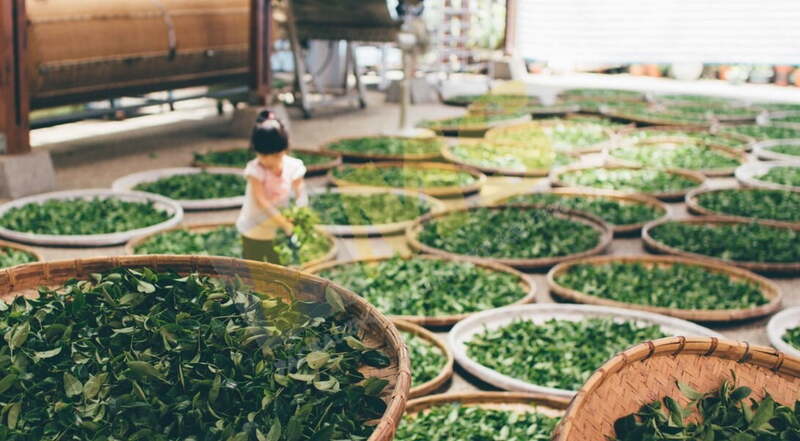
One thing importers should pay close attention to is chemical residue in Vietnamese tea. The issue is almost universal for non‑organic tea. Many local tea farms are smallholder-based and remain unaware of international restrictions on pesticides and fertilizers. So, if you plan to export to regulated markets like the EU, Japan, or the US, it’s something to test and verify carefully.
2. Know the Licenses & Certificates from Vietnamese Side:
When it comes to importing tea from Vietnam, exporters/suppliers usually handle certain documents and processes. It is your job to check and require paperwork on their side to clear customs in the destination country.
Documents Vietnamese exporters must provide:
- Phytosanitary Certificate issued by the Vietnam Plant Protection Department, verifying that the tea shipment is free from pests and complies with plant‑health requirements.
- Certificate of Origin (C/O), issued by Vietnam Chamber of Commerce and Industry (VCCI) or authorized agency, to prove the tea originates in Vietnam (often required to receive preferential tariffs under FTAs such as EVFTA).
- Analysis or Test Certificates (e.g. pesticide residue test, heavy metal content), especially for green or scented teas, to meet the standards of importing countries like EU, US, Japan.
- Business Registration & Export License, confirming the exporter is legally registered to export agricultural / food products per Vietnamese regulations.
3. Determine Import-Country Requirements & Regulations For Tea Import
The next step is to check your country’s legal & regulatory framework for tea import. Documents that you as an tea importer may need to prepare:
- Import Permit (if required) per the regulations of the destination country; sometimes food safety or agricultural health authorities require a permit before shipment arrives.
- Customs Import Declaration (invoice, bill of lading, packing list, contract) matching the exporter’s paperwork.
- Phytosanitary Certificate presented to import‑country plant health authority during clearance.
- Certificate of Origin to claim preferential tariff rates if under FTA.
- Test/Analysis certificates (residue, heavy metals, moisture, sensory / quality) to satisfy import‑country standards, often needed for regulated markets (EU, US, Japan).
That said, not all countries share the same rules. To comply properly, you should find out the HS code (Harmonized System) for tea under your customs law. Most countries classify tea under HS code 0902 (“Tea, whether or not flavoured”) for green, black, scented teas. For example, black tea / partly fermented tea often goes under 0902.30.
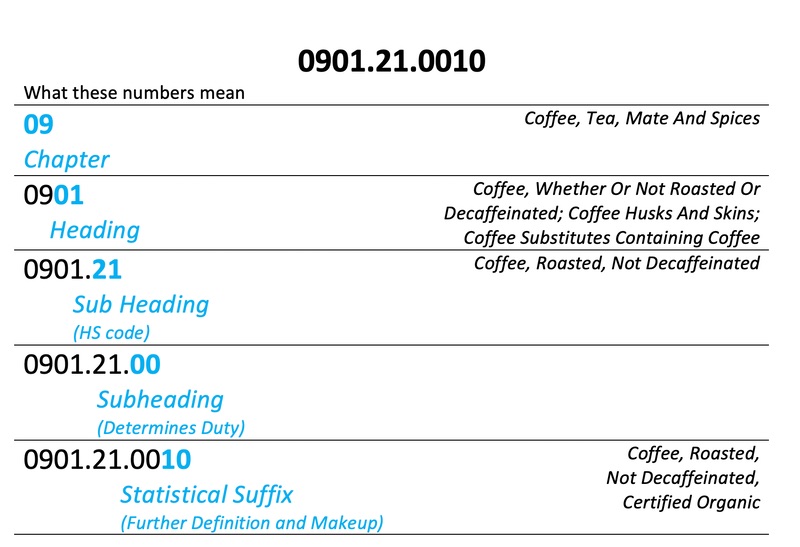
You must also understand your country’s plant quarantine and food safety regulations. In case of importing to the European Union, you may need chemical residue tests, microbiological tests + heavy metal analysis, or phytosanitary inspections. The specs are generally as follows:
- Pesticide residues must comply with EU MRLs, e.g. imidacloprid ≤ 0.05 mg/kg.
- Tea must be free from Salmonella in a 25g sample.
- Lead must not exceed 0.2 mg/kg.
- Cadmium must not exceed 0.1 mg/kg.
- Arsenic must not exceed 0.2 mg/kg.
- Phytosanitary Certificate may be required for unprocessed leaves.
Be mindful of labeling rules as well. In general, most countries require the label to clearly show the product name, ingredients, country of origin, manufacturer, expiration date, and storage instructions. In case of importing to EU member states, authorities may ask for additional labeling elements such as:
- Nutritional information (if applicable to health or function claims)
- Lot or batch number for traceability
- Name and address of importer or distributor within the EU
- Instructions for preparation (e.g., brewing temperature and time)
- Food contact material compliance (if packaged in bags, filter paper, etc.)
- Allergen statement if flavors/additives are used
Notes: Import regulations may change over time, especially for food safety and labeling. We highly recommend you regularly check with your local customs authority or visit the official websites of regulatory agencies for the most accurate and updated information.
4. Find & Verify Vietnamese Tea Suppliers
That’s about the paperwork. Now it’s time to think about suppliers and manufacturers. Typically, there are two main routes to find them:
- Use online supplier sourcing platforms to search for verified tea manufacturers with certifications. Some trustable options include VinaSources (Vietnam-focused platform), Alibaba and Tradewheel. You can also search B2B websites with keywords like “Vietnam tea supplier” in English or “nhà cung cấp trà Việt Nam” in Vietnamese.
- Attend trade shows in Vietnam like Vietnam Tea Coffee Trade Shows, Vietnam Foodexpo, Vietnam Sourcing Expo to meet suppliers in person.
For the tea market, online platforms are usually the easier way to start because most Vietnamese tea exporters list their products on B2B sites and provide certification details digitally. Trade shows remain valuable for building trust and sampling directly, but they require more time and budget to attend.
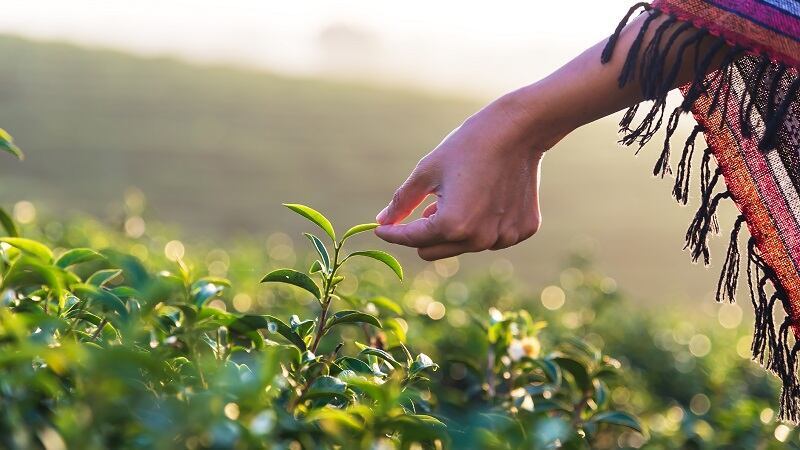
It’s worth noting that local supplier transparency can vary. Some suppliers may list certifications but have limited verification or no lab‑reports. Thus, it’s best to look for some reviews before working with them. An experienced tea manufacturer will be welcome to provide certain items, samples and certifications and support international certificates such as ISO 22000, HACCP, Organic when asked.
5. Negotiate Terms, Price, Packaging & Payment For Tea Import
This is about negotiating contracts and logistics with your Vietnamese tea supplier. First thing first, align carefully on the Incoterm used in the quotation and contract. In case you are unfamiliar, below are some common terms:
- FOB (Free On Board): The seller is responsible until the tea is loaded onto the ship at the Vietnamese port. Buyer handles freight, insurance, and import formalities.
- CIF (Cost, Insurance, Freight): The seller covers export costs, insurance, and freight to your destination port. The buyer takes over at the port of arrival.
Regarding MOQ (minimum order quantity) and lead time for Vietnamese tea, these vary depending on the product format and supplier you work with. On average, the MOQ starts from around 500 kg for bulk loose tea, 5,000-10,000 tea bags for private label projects, and 1,000 units per SKU for branded or retail-ready packaging.
According to data, it takes about 7 to 14 working days for bulk loose tea orders, 14 to 21 working days for basic private label tea bag orders, 30 to 45 days for branded or customized packaging, and 45 to 60 days for complex OEM projects with international certification.
There are also tariff and packaging costs to think about. Costs for branded and customized packages are typically higher than for generic bulk packaging. The terms should also clearly define delivery time, payment method (such as L/C, T/T, or deposit), and packaging specifications to avoid any confusion later on.
6. Shipping, Logistics & Customs Clearance
For shipping and logistics, you can choose sea freight (cheap but slow) or air freight (fast but expensive). Major sea ports in Vietnam include Hai Phong Port, Tan Cang ‑ Cat Lai Port, Cai Mep‑Thi Vai Port Complex, Da Nang Port, and Saigon Port. For airports, you can use Noi Bai International Airport (Hanoi) and Tan Son Nhat International Airport (Ho Chi Minh City) for international air cargo shipments.
Below is the average transit time table for shipping tea from Vietnam, based on official freight data.
| Shipping Method | United States | Europe | Japan | Australia |
| Sea Freight | 24-29 days | 30-40 days | 10-16 days | 15-22 days |
| Air Freight | 3-8 days (standard)
1-4 days (express) |
3-7 days (standard)
1-3 days (express) |
2-4 days | 3-5 days |
For customs and export procedures in Vietnam and your country, you can refer to step 2.
7. Post-Import: Quality Checks & Traceability
That’s about the tea import process. Following are some important considerations regarding post‑shipment inspection and long‑term traceability. These steps are essential for consistent tea quality maintenance and compliance assurance.
- Inspect shipment quantity upon arrival and match with invoice and packing list.
- Record lot or batch numbers for all imported tea for traceability.
- Make sure that storage is in a clean, dry, temperature‑controlled environment (cool, dry place per EU food safety guidelines).
Common Pitfalls & How to Avoid Them
So there you have it, the full 7‑step breakdown on how to import tea from Vietnam to your country. At its core, Vietnamese tea sourcing requires careful planning from product selection to documentation, supplier vetting, logistics, and compliance.
During the import process, make sure you are aware of the following common issues:
- Supplier sends invalid or incomplete certificates, especially phytosanitary or wrong format for the destination country.
- Delays in documents or lab test results can cause shipment to be held at port, leading to high demurrage or storage fees.
- Tea with chemical residues exceeding import country limits may be rejected or destroyed by customs.
- Packaging does not meet labeling regulations, resulting in relabeling or product recall.
VinaSources is a leading B2B platform for sourcing Vietnamese goods. The platform pioneers in connecting international buyers with verified local suppliers and manufacturers, allowing them to source both raw materials and finished products with ease. Currently, VinaSources features a wide catalogue across categories like food and beverage, furniture, garments, handicrafts, and more.
Explore the platform and request for quotations to get the best Vietnam-based sourcing options tailored to your business needs.
